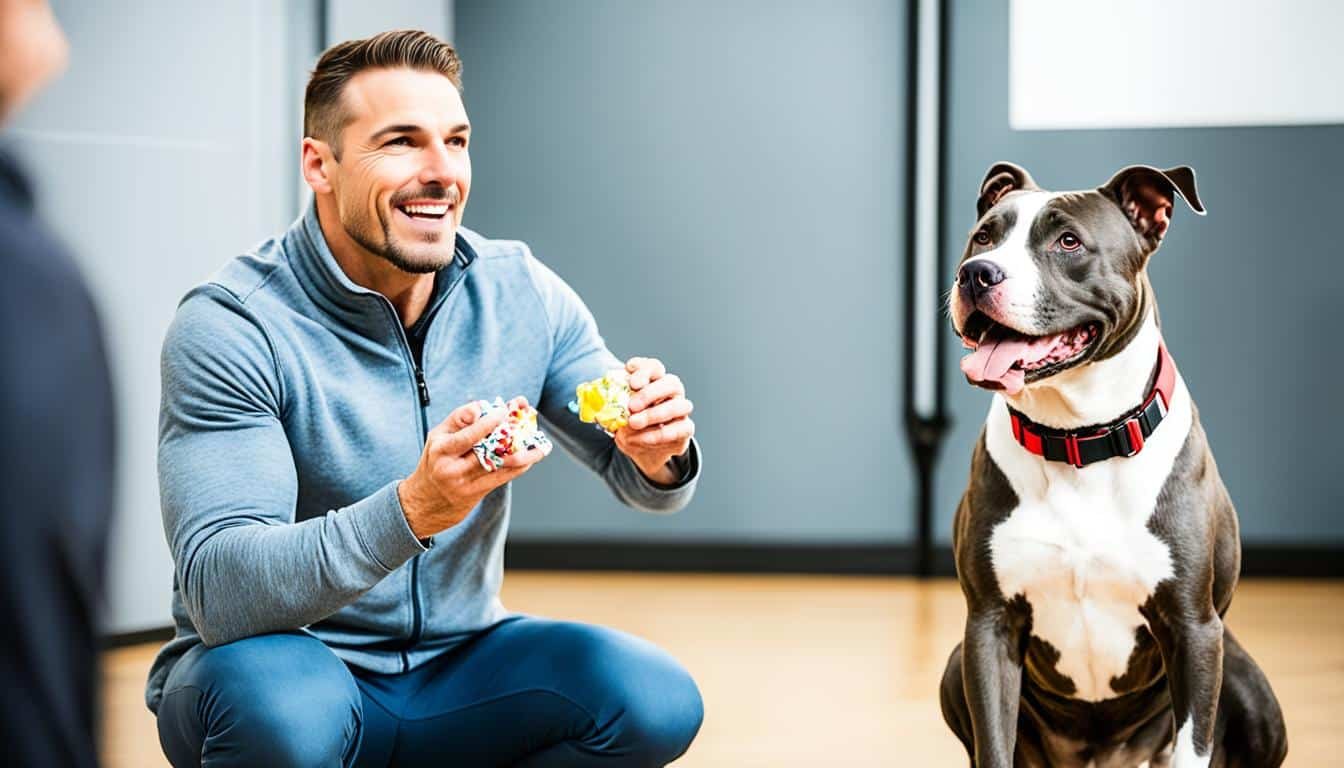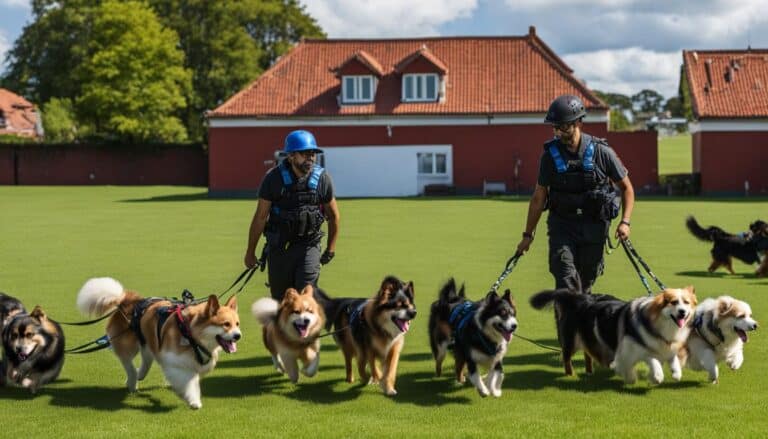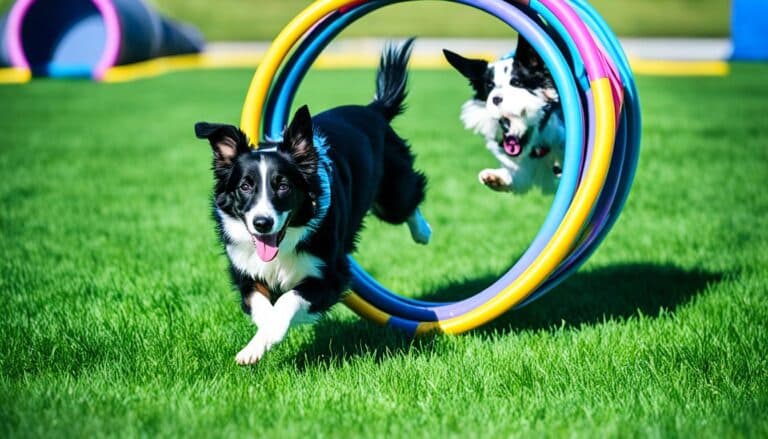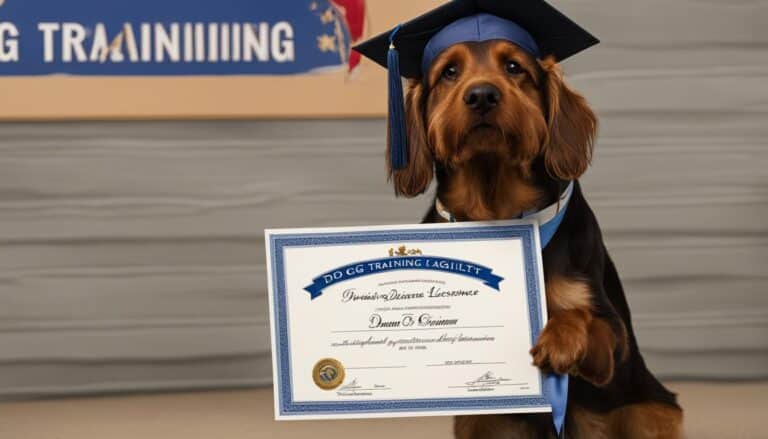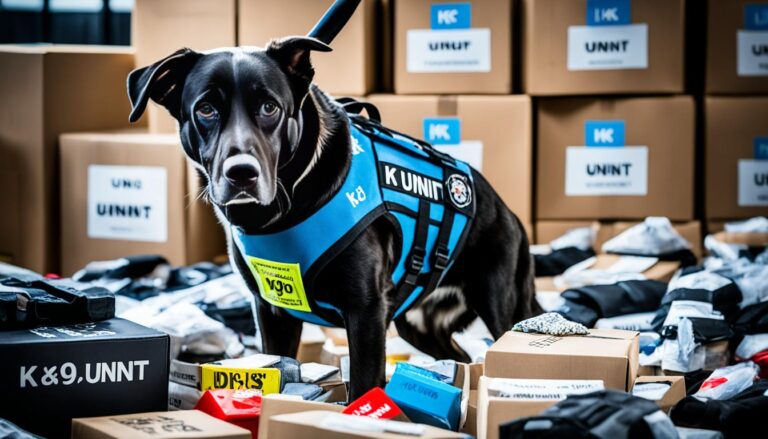How to Train a Pitbull Dog
Are you the proud owner of a lovable pitbull dog? If so, you already know the incredible bond that can form between you and your four-legged companion. But like any dog breed, pitbulls require proper training and guidance to thrive as well-behaved and obedient pets.
However, perhaps you’ve encountered the negativity and apprehension that often surrounds pitbulls. Society often unfairly stereotypes them, painting them as aggressive and dangerous. But here’s the truth: with the right training and socialization, pitbulls can be incredibly friendly, loyal, and loving.
I know this from personal experience. When I first welcomed my pitbull into my family, I was met with skepticism and concern from friends and neighbors. But through dedicated training and nurturing, I witnessed a transformation in my furry friend. Instead of a feared and misunderstood “bully,” I had a playful and obedient companion by my side.
That’s why I want to share with you essential pitbull training tips, pitbull obedience training techniques, and ways to promote positive behavior in your beloved dog. Together, we can defy stereotypes and show the world the true potential of pitbulls.
The Importance of Socialization for Pitbull Puppies
Socialization plays a crucial role in shaping the behavior of pitbull puppies. It ensures that they grow up to be comfortable around people, animals, and different environments. Early socialization is key to raising a well-adjusted pitbull.
Start socializing your pitbull at a young age to expose them to a variety of situations. Take them to new places like parks, pet-friendly stores, and busy streets. Introduce them to different people, including children and strangers. Allow them to interact with other well-behaved dogs, gradually increasing the complexity of social interactions.
Positive training methods and reinforcement are essential during socialization. Use rewards, praise, and treats to encourage desired behaviors. This approach helps pitbull puppies develop positive associations and builds their confidence in new situations. With consistent training and positive reinforcement, they will learn acceptable behavior and become well-mannered adult dogs.
Remember, socialization is an ongoing process that should continue throughout your pitbull’s life. Regular exposure to new experiences and reinforcing positive behaviors will help them maintain their social skills and adaptability.
Teaching Proper Behavior with Other Dogs
Pit bulls, known for their history as fighting dogs, may not always display tolerance towards other dogs. However, with the right training and commands, you can help your pitbull develop proper behavior when interacting with other dogs.
One effective method to maintain control in the presence of other dogs is leash training. Using a sturdy leash and harness, guide your pitbull’s attention towards you. Teach them to focus on you by using commands like “look,” “stay,” and “come.”
Consistency is key in training your pitbull. Practice these commands regularly in different environments to ensure they respond well when encountering other dogs. By reinforcing positive behavior and obedience, you can help your pitbull develop good manners and social skills.
Advanced Training and Dog Sports
Pit bulls are known for their high energy levels and enthusiasm for training. Taking your pitbull’s training to the next level with advanced obedience and dog sports can provide mental stimulation and physical exercise while reinforcing good behavior.
One popular dog sport for pitbulls is agility training. In agility, your pitbull will navigate through a course filled with obstacles such as jumps, tunnels, and weave poles. This challenging activity not only enhances your dog’s physical fitness but also promotes discipline and focus. Your pitbull will learn to respond to your commands quickly and accurately, improving their overall obedience skills.
Another exciting option is rally obedience. In rally, you and your pitbull work as a team to complete a course consisting of various obedience exercises. These exercises include heeling, sitting, staying in place, and performing different commands. Rally obedience helps strengthen the bond between you and your pitbull while sharpening their listening and coordination skills.
When participating in advanced training and dog sports, it’s important to stay consistent with positive reinforcement techniques. Use treats that your pitbull finds motivating to reward their accomplishments and reinforce desired behaviors. Remember to break the training sessions into manageable time frames and always end on a positive note.
By engaging your pitbull in advanced training and dog sports, you provide an outlet for their energy and further enhance their behavioral training. These activities not only keep your pitbull physically fit but also mentally stimulated, which is essential for their overall well-being. Explore the world of dog sports and watch your pitbull thrive!
Benefits of Advanced Training and Dog Sports:
- Enhanced obedience skills and responsiveness
- Improved mental stimulation and focus
- Increased physical fitness and strength
- Stronger bond between you and your pitbull
- Opportunity to showcase your pitbull’s abilities
Dealing with Aggression and Proofing
If you find that your pitbull displays aggression towards other dogs, it’s important to address this behavior promptly to ensure the safety of both your dog and others. Seeking help from a professional trainer who specializes in pitbull obedience training can greatly assist you in managing and modifying your pitbull’s aggressive tendencies.
A professional trainer will provide you with guidance and specific techniques to address and control your pitbull’s aggression. They may recommend enrolling your pitbull in obedience classes that focus on socialization and proper behavior around other dogs. These classes will allow your pitbull to learn how to interact appropriately in a controlled environment under the guidance of an experienced trainer.
Crate training can also be an effective tool in managing aggression in pitbulls. Providing your pitbull with a crate that is comfortable and secure can serve as a safe space for them to retreat to when they feel overwhelmed or anxious. The crate can help create a sense of security and calmness, allowing your pitbull to relax and decompress.
During training exercises, it’s important to redirect your pitbull’s energy towards positive behaviors. Engaging your pitbull in mentally stimulating activities, such as obedience training and interactive games, can help reduce their aggression and provide mental stimulation. By replacing undesirable behaviors with obedience commands and rewarding them for their positive responses, you can help teach your pitbull better ways to communicate and interact with others.
Key Takeaways:
- Seek help from a professional trainer to address aggression in your pitbull.
- Consider enrolling your pitbull in obedience classes that focus on socialization and proper behavior around other dogs.
- Utilize crate training as a tool to provide your pitbull with a safe and secure space.
- Engage your pitbull in mentally stimulating activities and training exercises to redirect their energy towards positive behaviors.
Canine Certification Courses
If you want to ensure that your pitbull is well-behaved and capable of passing basic obedience tests, enrolling them in a canine certification course is a great option. These courses are designed to test your dog’s skills and behaviors in various situations, helping them become more well-rounded and obedient.
During these certification courses, your pitbull will be exposed to real-life scenarios such as walking through crowded areas, interacting with strangers, and being around other dogs. This training will help them develop the necessary skills to navigate these situations with confidence and good behavior.
By successfully completing a canine certification course, your pitbull can demonstrate that they are not aggressive but rather responsive to positive training methods. This can go a long way in changing the public perception of pit bulls and combating the stereotypes associated with the breed.
One of the key benefits of canine certification is that it provides you with a structured training program to follow. Instead of wondering where to start or what commands to teach your pitbull, the certification course provides a clear roadmap. This ensures consistency in training and helps you establish a solid foundation of obedience commands.
Remember, positive training methods are essential when working with pitbulls. These dogs respond well to rewards and praise, so be sure to use treats, toys, and verbal cues to reinforce positive behavior.
With the skills and obedience your pitbull gains from a canine certification course, you’ll be proud to showcase their good behavior in various settings. Make sure to celebrate their achievements and continue reinforcing their obedience at home.
So, why wait? Enroll your pitbull in a canine certification course today and set them up for success!
Using Positive Reinforcement in Training
Pit bulls are intelligent and eager to please, making them responsive to positive reinforcement training methods. By using rewards and praise, you can effectively teach your pitbull obedience and good behavior. Here are some pitbull training tips to help you utilize positive reinforcement:
1. Clicker Training
Clicker training is a popular positive reinforcement technique that involves using a small handheld device that makes a clicking sound. The click is paired with a treat, which helps your pitbull associate the sound with a reward. Clicker training is particularly effective for teaching specific behaviors and tricks.
2. Treats as Rewards
Choose healthy and delicious treats that your pitbull loves as rewards during training sessions. Treats can motivate and reinforce positive behavior. Make sure to use small, bite-sized treats to avoid overfeeding and to keep your pitbull engaged.
3. Consistency and Timing
Consistency is key when using positive reinforcement. Always reward your pitbull immediately after they demonstrate the desired behavior. This helps strengthen the association between the behavior and the reward, making it more likely to be repeated.
4. Positive Verbal and Physical Cues
In addition to treats, use positive verbal cues such as “good boy/girl” and gentle petting or a belly rub to reinforce your pitbull’s good behavior. These positive interactions can build trust and strengthen the bond between you and your pitbull.
5. Avoid Punishment
Avoid using punishment or leash corrections when training your pitbull. These methods can create fear and resistance, hindering the training process. Positive reinforcement focuses on rewarding and reinforcing desired behaviors rather than punishing unwanted behaviors.
Remember, each pitbull is unique, so be patient and adjust your training techniques to suit your dog’s personality and learning style. With consistent and positive training methods, your pitbull will thrive and become a well-behaved and obedient companion.
Overcoming Pitbull Stereotypes
Pit bulls have been unfairly labeled as aggressive dogs due to media portrayals and their history. However, with proper training, socialization, and responsible ownership, you can help change these stereotypes and showcase the true nature of pitbulls. By focusing on pitbull behavior training and positive training methods, you can raise a loving and well-behaved pet.
Training your pitbull is essential in debunking the stereotypes surrounding this breed. Through consistent and positive training techniques, you can shape your pitbull’s behavior and promote positive interactions. Utilize reward-based training methods, such as clicker training and the use of treats, to reinforce desired behaviors and create a strong bond with your pitbull.
Proper Socialization
Socialization plays a crucial role in shaping your pitbull’s behavior. Introduce your pitbull puppy to a wide range of people, animals, and environments from an early age. By exposing them to different situations, you help them develop confidence and adaptability, reducing the likelihood of aggressive behavior.
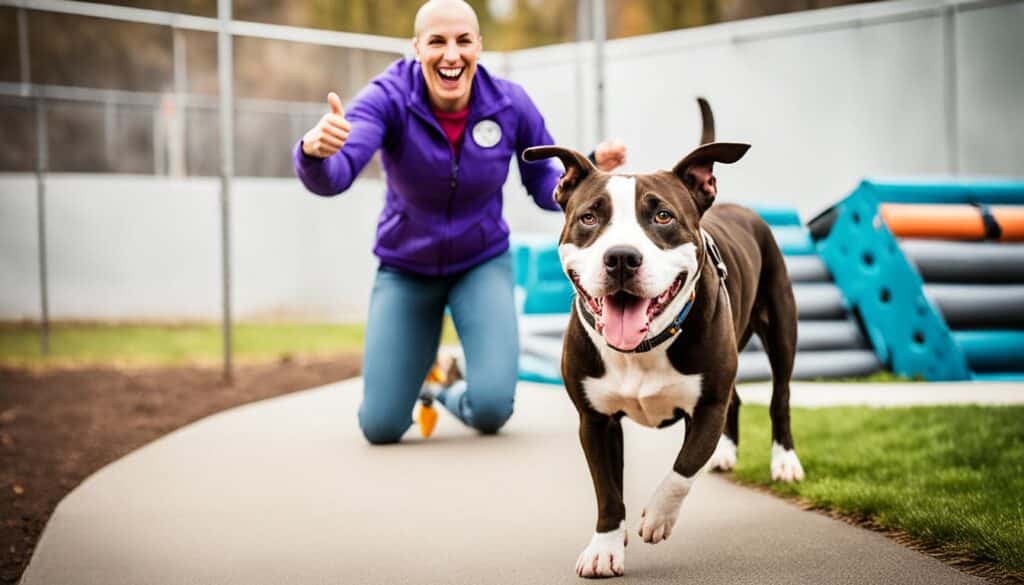
Responsible Ownership
Being a responsible pitbull owner goes hand in hand with overcoming stereotypes. Ensure that your pitbull receives regular exercise, mental stimulation, and appropriate outlets for their energy. Provide them with a safe and loving environment where they can grow and thrive. By meeting their physical and emotional needs, you are setting a foundation for good behavior and overall well-being.
Community Involvement
Becoming involved in your community is another effective way to challenge the negative stereotypes surrounding pitbulls. Engage in activities such as obedience classes, agility training, or therapy dog programs, demonstrating the positive qualities and abilities of pitbulls. By becoming an advocate for your pitbull and promoting positive interactions with others, you can help change perceptions and foster understanding.
In conclusion, overcoming pitbull stereotypes requires a combination of training, socialization, responsible ownership, and community involvement. By training your pitbull using positive methods, providing them with proper socialization, and being an ambassador for the breed, you can help challenge misconceptions and showcase the true nature of these loving and loyal pets.
The Benefits of Canine Good Citizen Program
The Canine Good Citizen Program, offered by the American Kennel Club (AKC), is a certification designed to evaluate a dog’s obedience and behavior. By successfully passing a set of tests, your pitbull can become a Canine Good Citizen (CGC), demonstrating their well-behaved nature and ability to interact safely with people and other dogs.
The CGC certification holds several benefits for pitbull owners. Firstly, it provides validation that your pitbull has received positive training and is capable of following pitbull obedience commands effectively. This recognition can enhance your pitbull’s reputation and challenge the negative stereotypes associated with the breed.
Additionally, the Canine Good Citizen certification can be advantageous in various practical circumstances. For instance, some rental properties or insurance companies may require specific breed certifications to provide coverage. Owning a CGC-certified pitbull can facilitate the rental process and broaden your options in terms of housing and insurance.
Participating in the Canine Good Citizen Program also strengthens the bond between you and your pitbull. Through positive training methods and obedience exercises, you will deepen the trust and understanding between you and your furry companion.
To pursue the Canine Good Citizen certification for your pitbull, you need to prepare them for the CGC test. The test evaluates your dog’s behavior in different situations, including walking on a loose leash, sitting politely for petting, reacting calmly to distractions, and behaving appropriately when encountering other dogs. By practicing pitbull obedience commands and positive training for pitbulls, you can adequately prepare your pitbull for success.
Understanding Pitbull Traits and Characteristics
Pit bulls, originally bred for bull and bear baiting, posses unique traits and characteristics that require special attention in their training and care. While they may have a high prey drive and a strong instinctual nature, understanding and accommodating these traits can help create a well-rounded and happy pitbull.
One important aspect of pitbull training is to provide outlets for their energy and instincts. Regular exercise, such as daily walks, playtime, and interactive games, can help channel their energy in a positive and productive manner. Engaging in activities that stimulate both their physical and mental abilities can help prevent negative behavior and promote a well-balanced lifestyle.
Positive training methods are particularly effective in training pitbulls. Using rewards and positive reinforcement, such as treats, praise, and play, can motivate and encourage desired behaviors. Consistency, patience, and establishing clear boundaries are also essential in their training. By focusing on positive training for pitbulls, you can foster a trusting and cooperative relationship with your pet.
It’s important to note that pitbulls have a deep attachment to humans and thrive on human companionship. They are known for their loyalty and affectionate nature. Therefore, positive training methods that encourage bonding and trust are highly effective with pitbulls. Spend quality time with your pitbull, providing love, attention, and care to strengthen your bond and build their confidence.
Key Pitbull Training Tips:
- Provide regular exercise and mental stimulation to channel their energy.
- Use positive training methods and rewards to encourage desired behaviors.
- Establish clear boundaries and be consistent in your training approach.
- Spend quality time bonding and building trust with your pitbull.
By understanding and embracing the unique traits and characteristics of pitbulls, you can train them effectively and help them thrive in a loving and supportive environment. Remember, positive training for pitbulls is key to their well-being and success as loyal, loving companions.
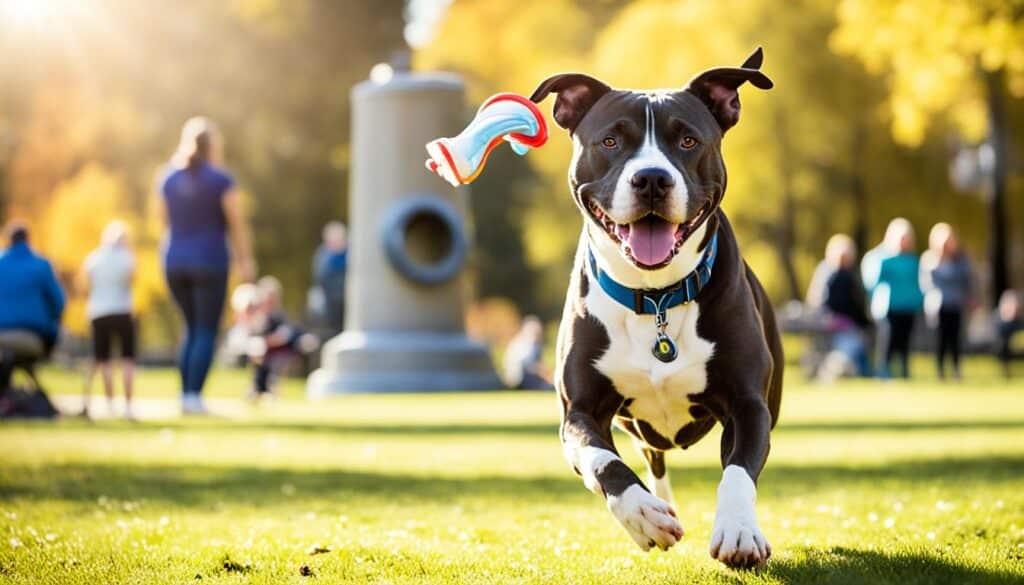
Be a Champion for Your Pitbull
As a responsible owner and advocate for your pitbull, you have the power to combat the negative perceptions surrounding this breed. By implementing effective pitbull training methods and promoting positive training techniques, you can showcase the true nature of these dogs and help change public opinion.
Start by training and socializing your pitbull from an early age. Consistency and positive reinforcement are key in shaping their behavior. Use rewards, such as treats and praise, to encourage good behavior and discourage negative actions. With proper training, your pitbull can become a well-behaved and obedient ambassador for its breed.
Show the world that pitbulls are loyal, fun-loving, and intelligent pets. Encourage interactions with people of all ages and socialize your pitbull with other dogs in controlled environments. This will help dispel the myth that pitbulls are inherently aggressive. By demonstrating responsible ownership and advocating for positive training methods, you can change the narrative surrounding pitbulls and promote a more positive image for this misunderstood breed.
